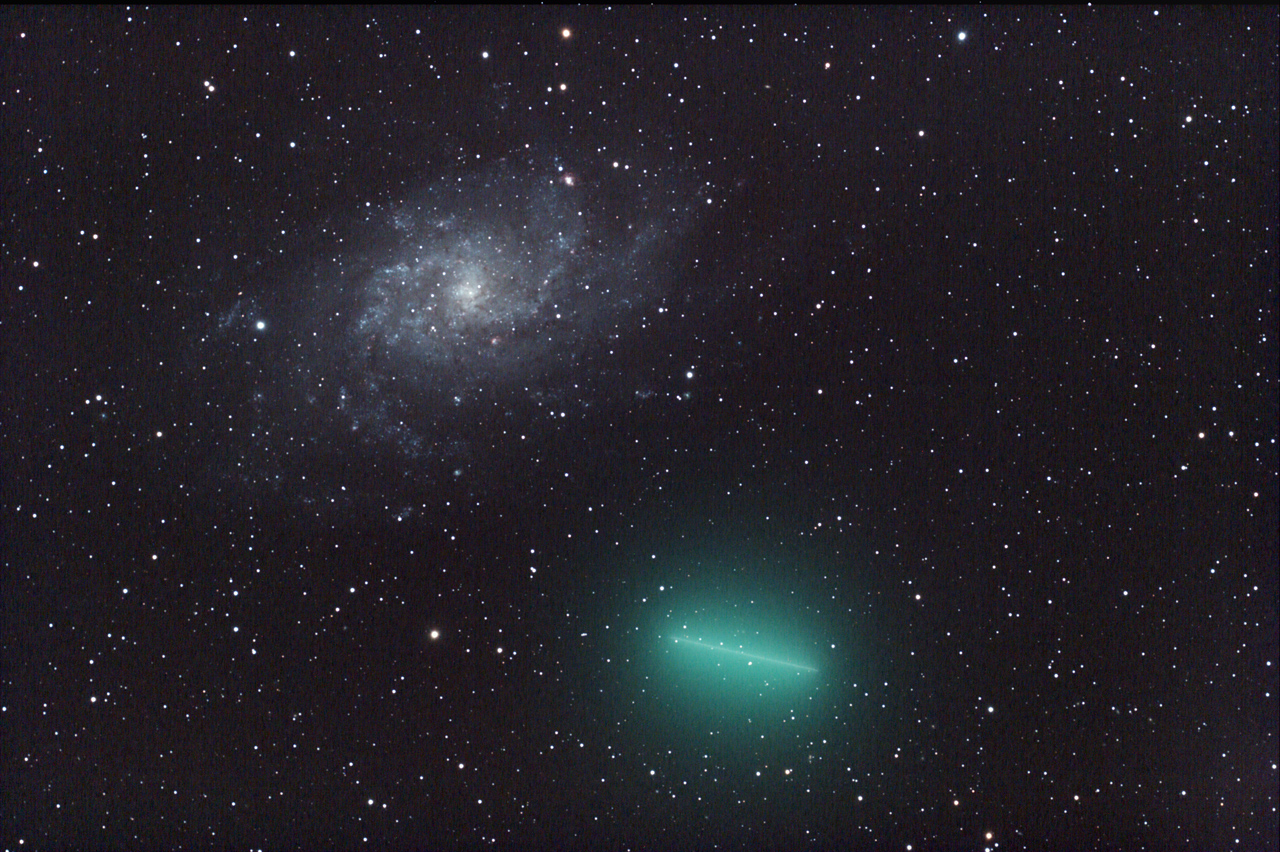
Credit & Copyright: Emiel Kempen
Explanation: This gorgeous galaxy and comet portrait was recorded on December 30th, in the skies over Hoogeveen, The Netherlands. The combined series of 60 x 60 second exposures finds the lovely green coma of Comet 8P/Tuttle near its predicted conjunction with the Triangulum Galaxy. Aligning each exposure with the stars shows the comet as a streak, slowly moving against the background stars and galaxy. An alternative composition with exposures centered on the comet, shows the background stars and galaxy as streaks. The alluring celestial scene would also have been a rewarding one for the influential 18th century comet hunter Charles Messier. While Messier scanned French skies for comets, he carefully cataloged positions of things which were fuzzy and comet-like in appearance but did not move against the background stars and so were definitely not comets. The Triangulum Galaxy, also known as M33, is the 33rd object in his famous not-a-comet catalog. The modern understanding holds that the Triangulum Galaxy is a large spiral galaxy some 3 million light-years distant. Comet 8P/Tuttle, just bright enough to be visible to the unaided eye in dark, northern skies, is about 40 million kilometers (2 light-minutes) away.

5 comments:
Very awesome. The galaxy always is!
A note for insomniacs...
According to the International Meteor Organization, maximum activity this year is expected on Friday 1:40 a.m. Eastern Standard Time.
For those in the eastern United States, the radiant will be about one-quarter of the way up in the east-northeast sky. The farther to the north and east you go, the higher in the sky the radiant will be. To the south and west the radiant will be lower and the meteors will be fewer.
From Western Europe, the radiant will soar high in the east as the peak arrives just as morning twilight intervenes.
Quadrantid meteors are described as bright and bluish with long silvery trains. Some years produce a mere handful, but for favorably placed observers, this could be a shower to remember; at greatest activity, Quadrantid rates will likely range from 30 to 60 per hour for eastern parts of the U.S. and Canada, to 60 to 120 per hour for Western Europe.
Cool FJ... I think I'm too far south:>(
We have rain forcasted, so I doubt I'll get to see it.
ps That comet looks suspiciously like a light saber to me ;)
May the force be with you Kevin!
Post a Comment